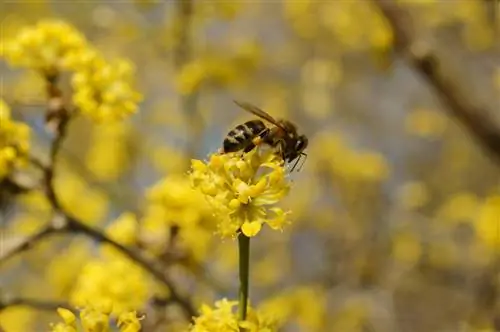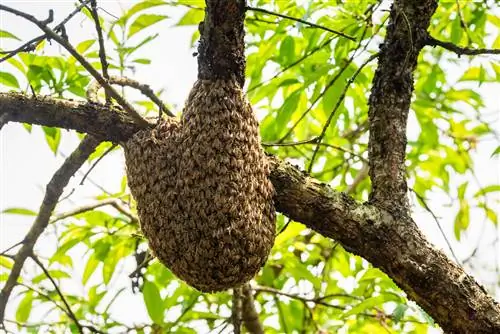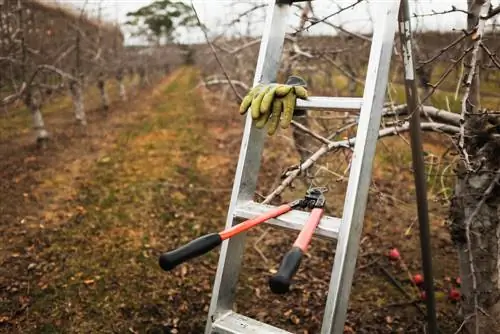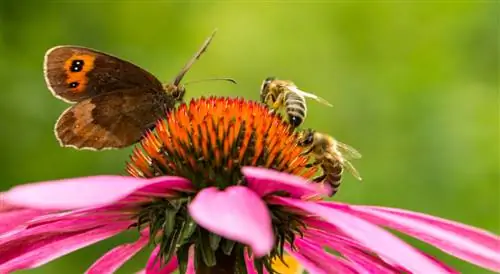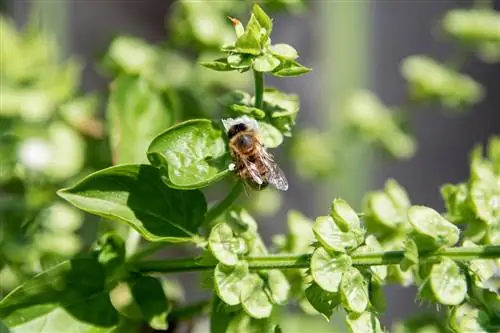- Author admin [email protected].
- Public 2023-12-16 16:46.
- Last modified 2025-06-01 06:02.
The lack of solid seeds also has a significant impact on the continued existence of bee colonies, because the active ingredients contained in the plants are now considered to be the cause of bee deaths worldwide. Hybrid pollination, which is essential for our bees' survival, is no longer necessary, which in turn means that we need more pollen- and nectar-rich plants in our gardens to compensate.
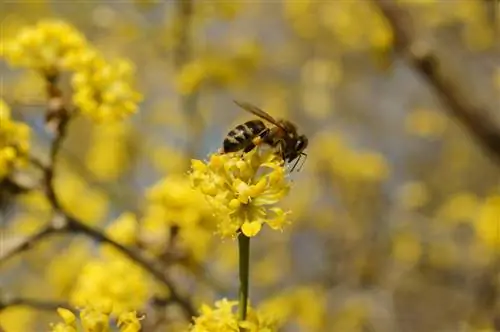
In addition, the bees collecting nectar and pollen are finding fewer and fewer flowers in many regions. For beekeepers, this means that they have to feed considerable amounts over the summer months. The effort involved is not exactly cheap for the entire guild and this unnatural nutritional supplement also has an unfavorable effect on the taste quality of the honey. A relatively simple and effective alternative are bee trees.
In this way, we create natural food sources in our gardens that offer very high-quality pollen and nectar from April to October, which the bees will literally fly to. But many other useful insects such as wild bees or bumblebees, which are threatened with extinction in some regions, also benefit from such bee pastures, also known in beekeepers' language as beekeeping, and even the somewhat inconspicuous flowering species would significantly help them in their fight for survival. After all, a single bee pollinates around 1,000 flowers every day, collecting the pollen with its hind legs and transporting it to the hive to feed the larvae and as a source of energy.
We have already shown on our portal what you as a garden owner can do to provide food for your flower visitors using the example of insect-friendly garden plants such as coneflowers, mountain asters or meadow daisies. Equally popular with honey bees are flower hedges made from nutrient trees, of which we have summarized the ten most popular types in a brief overview.
| Name | botanical name | Flowering time | Height (meters) | Special feature |
|---|---|---|---|---|
| Cornelian cherry | Cornus mas | February - April | 3 to 6 | light scent, yellow flowers |
| Hemp willow | Salix viminalis | March - April | 6 to 10 | silver gray kittens, pleasant scent |
| Alpine currant | Ribes alpinum | April - May | 1, 5 to 2 | Berries in autumn, yellow-green flowers |
| Rock Pear | Amelanchier ovalis | April - May | 2 to 4 | particularly frost hardy with edible fruits |
| Common barberry | Berberis vulgaris | April - June | 1 to 3 | edible fruits, thorny leaves |
| Field maple | Acer campestre | May | 3 to 12 | great autumn color with corky bark |
| Pointed-leaved medlar | Cotoneaster acutifolius | May - June | 1, 5 to 2 | hard to cut, black berries, reddish-brown leaves |
| rotten tree | Rhamnus frangula | May - June | 3 to 5 | red-black fruits in autumn |
| Privet | Ligustrum vulgare | June - July | 2 to 5 | black fruits for autumn, pleasant scent |
| Snowberry | Symphoricarpos albus laevigatus | June - August | 1, 5 to 2 | light pink flowers, white autumn fruits |
And that brings us to our last topic for February, a section that we want to devote to all monthly news in the future.

